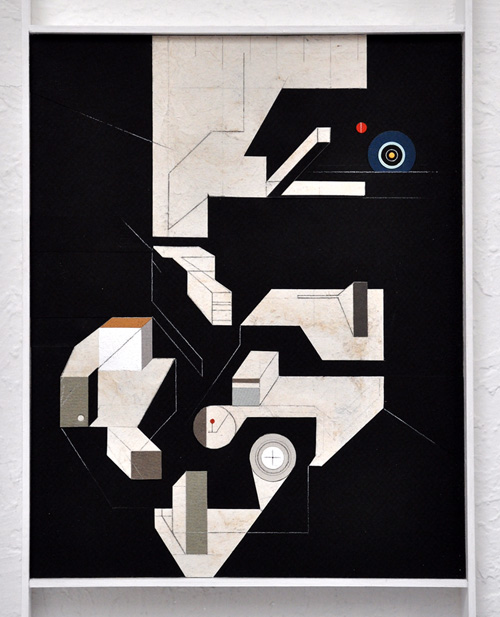 My latest piece takes the first five iterations of the British Antarctic Survey's Halley Research Station for its subject. The base is located on the Brunt Ice Shelf of the Weddell Sea and is well known for its atmospheric studies. The first measurements of ozone depletion in the Antarctic stratosphere were taken here in 1985, leading to the international agreement on banning chlorofluorocarbons (CFCs). Halley I was founded in 1956 for the International Geophysical Year of 1957-58 by an expedition from the Royal Society. Halley II, III, and IV were constructed over successive decades as the snow surface, rising about a meter a year, buried each of the bases over time. My image's vertical arrangement references the resulting stratification of architecture and ice which places Halley I at a depth of 56 meters (184 feet) in 2012, with the whole lot drifting towards the Weddell at the rate of around half a kilometer annually. Halley V, still in use, was the first of these stations to be built on steel platforms supported by extendable legs to keep it above the accumulating snow for at least a while longer. Building on this idea, BAS introduced new structures mounted on skis to be moved by bulldozers to prevent them from being buried. The newest step in this direction is the spectacular Halley VI station, which warrants an artwork and blog post of its own. Look for it here soon. Long View Study No. 19 (Halley I-V) was created using wood, acrylic, graphite and cut paper. It's the third artwork in my Antarctic research station series (Syowa and McMurdo being the first two).
My latest piece takes the first five iterations of the British Antarctic Survey's Halley Research Station for its subject. The base is located on the Brunt Ice Shelf of the Weddell Sea and is well known for its atmospheric studies. The first measurements of ozone depletion in the Antarctic stratosphere were taken here in 1985, leading to the international agreement on banning chlorofluorocarbons (CFCs). Halley I was founded in 1956 for the International Geophysical Year of 1957-58 by an expedition from the Royal Society. Halley II, III, and IV were constructed over successive decades as the snow surface, rising about a meter a year, buried each of the bases over time. My image's vertical arrangement references the resulting stratification of architecture and ice which places Halley I at a depth of 56 meters (184 feet) in 2012, with the whole lot drifting towards the Weddell at the rate of around half a kilometer annually. Halley V, still in use, was the first of these stations to be built on steel platforms supported by extendable legs to keep it above the accumulating snow for at least a while longer. Building on this idea, BAS introduced new structures mounted on skis to be moved by bulldozers to prevent them from being buried. The newest step in this direction is the spectacular Halley VI station, which warrants an artwork and blog post of its own. Look for it here soon. Long View Study No. 19 (Halley I-V) was created using wood, acrylic, graphite and cut paper. It's the third artwork in my Antarctic research station series (Syowa and McMurdo being the first two).